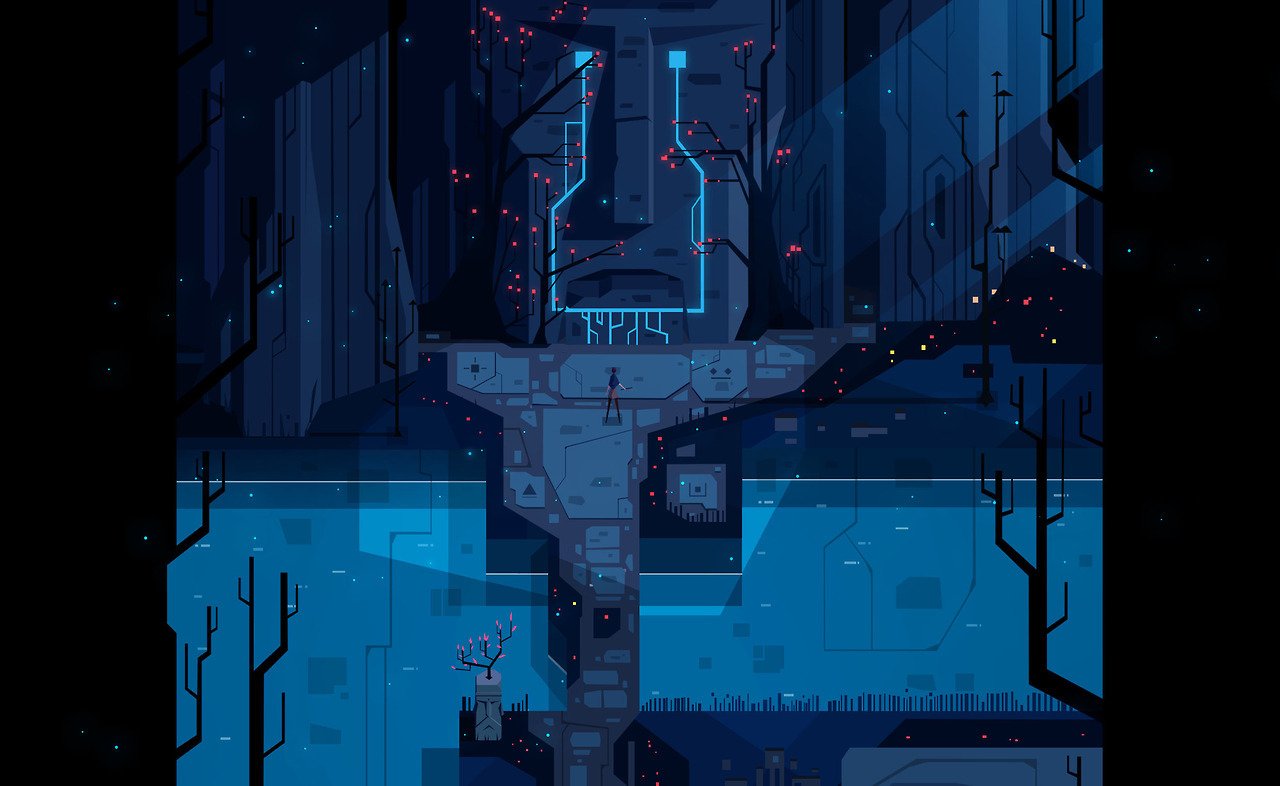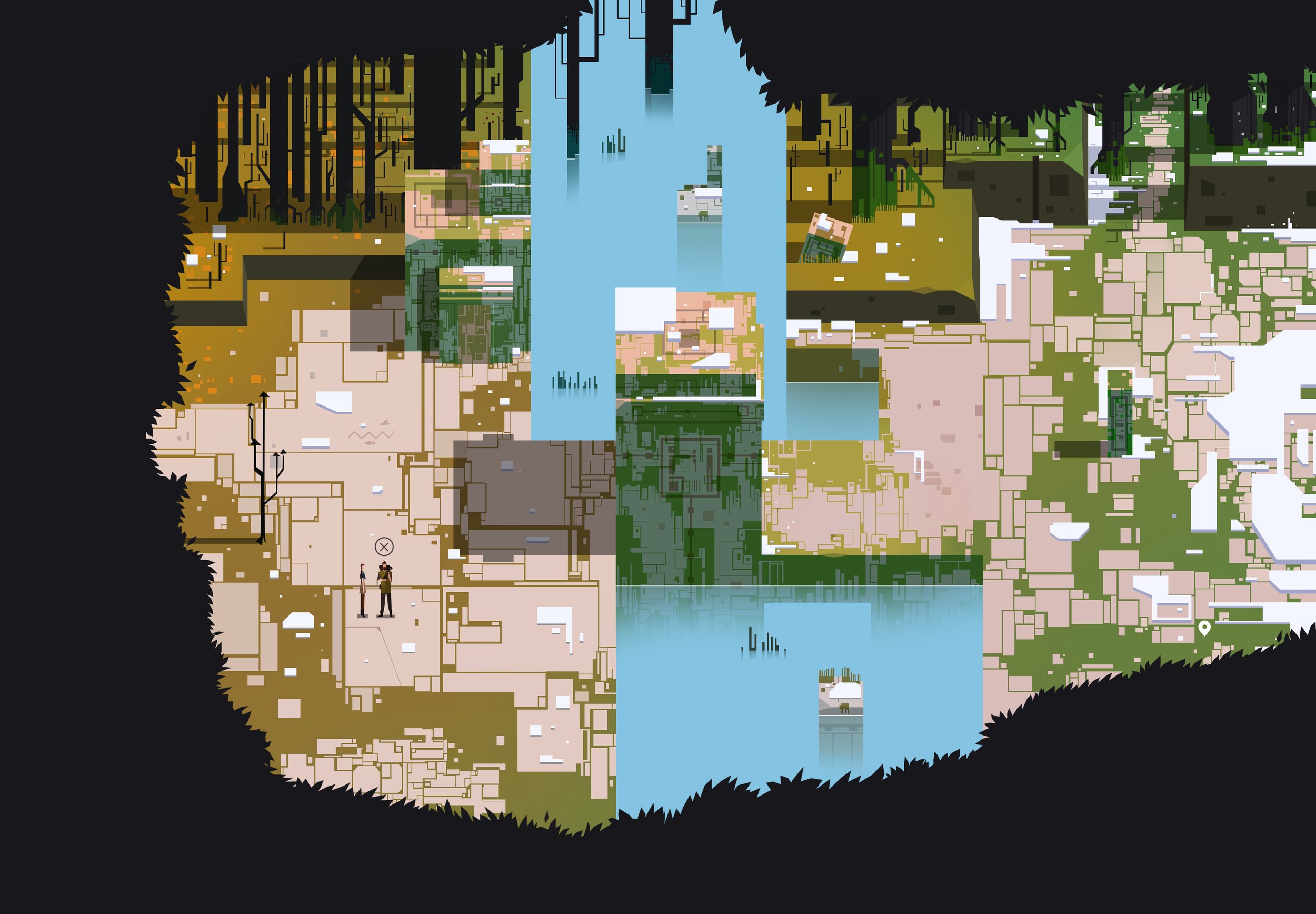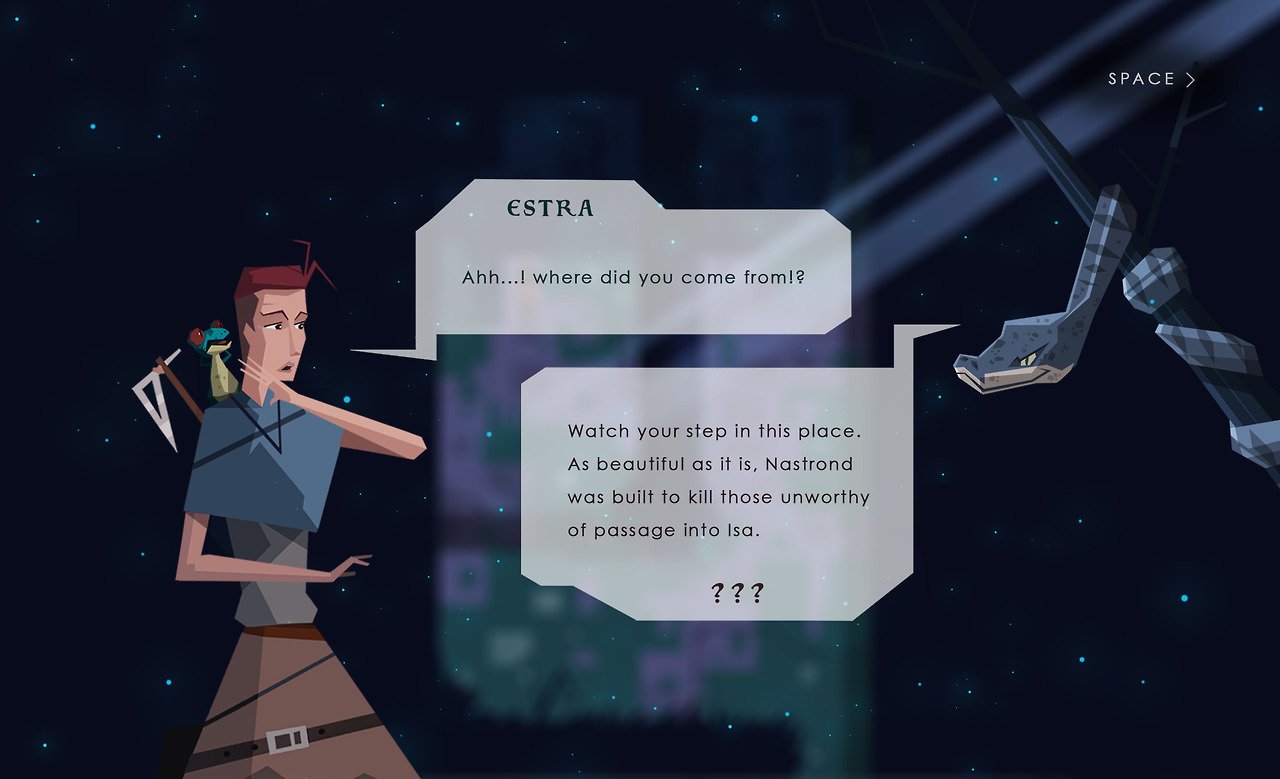ATONE: Heart of the Elder Tree Review: Audibly Enthralled
As far as games with Norse mythology go, ATONE: Heart of the Elder Tree isn't going to present like God of War, nor was it trying to. Luckily, ATONE refreshingly separates itself from other titles of the ilk in several ways. Whether it's utilizing the game’s lore to create a compelling story filled with choice, strong characters, or contrasting combat, Wildboy Studios' hand-drawn rhythmic trek successfully carves its own creative identity. Unfortunately, the bulk of ATONE left me wanting more concerning the puzzles, the rhythmic bouts, and the game's systems and mechanics.
Viking Jack
The first thing that jumps off the screen is the game's hand-drawn art style, reminiscent of cartoons like Samurai Jack and le really shines during the cinematic cutscenes. The hand-drawn style makes for great key art photos and is ultimately refreshing to experience. Although the game's style is successful and a strong positive for the game overall, it does make for several similar-looking environments. It's worth mentioning that attempts were made to differentiate them, but utilizing this style, they needed to differentiate more.
ATONE's cutscenes successfully grab your attention but do so with the help of the game's soundtrack, which makes several key moments that much more emotional and hype. When an epic cutscene ensues, or a fight to the death begins, ATONE's sound design and music enhance the experience tenfold. Unfortunately, the same cannot be said for the character's VO. In some, if not most, the VO performances are acceptable and don't jump out. Yet, essential characters' performances took me out of the experience in crucial moments too often.
Gasping From Choices
In ATONE: Heart of the Elder Tree, the Gods have been forbidden from falling for mortals. From this rule, tragedy strikes humankind, and others just try to get by. The Atori people, the people of the main character, have been tasked with watching over the Elder Tree since the Gods so abruptly left in an attempt to show they are still worthy.
We follow Estra, a young girl of the Atori people who travels the realms and finds herself thrust into a fight between mortals and Gods to uncover the truth of her father, Thyon's death. Estra and Thyon's journey leaves a strong impression, and both characters' narratives conclude compellingly. Other vital characters are presented throughout the game. For instance, my favorite character, an animal spirit named Yri, captured my heart and top spot without competition.
Norse mythology is applied uniquely enough to create engaging lore and characters to satiate a living, breathing world that feels realized and legitimate as opposed to the same Norse narratives we've seen adapted time and time again. Players can even find journals throughout their journey that detail the backgrounds of characters, rules or laws established in the world, and even events and lore to be fully experienced later.
Specific moments of the game's narrative had me audibly gasping or exclaiming my dismay with the game's effective writing. However, ATONE's story is genuinely tragic, touching on themes like loss and regret, which quickly turn dark with only a few touching moments in between. As someone who is a glutton for punishment when it comes to character stories, I was enthralled throughout, but I can see the balance, or lack thereof, being a bit much for some.
One of my favorite aspects of the game's narrative is the level of choice it presents. Some choices appear in dialogue, but it is unclear if these choices change the outcome of events, but they adequately enhance the experience of my Estra. Adversely, Estra is given choices before or after fights that affect the story and the paths you take. These choices range from sparing someone or killing them, protecting someone or yourself, fighting or investigating, etc. After completion or rolling credits, you are shown a chart representing your path and choices. As a player, I am generally not that psyched about something like this. Yet, a title with as good character writing as this, I was overjoyed to see this added layer of replayability.
A Trio Out of Tune
Jumping into ATONE, players will control a young Estra in a top-down exploration-type perspective with optional conversations to be had by walking to bystanders and engaging in the spoken word. Additionally, players can find food items to be utilized for health, optional puzzles to be given by other characters or laid upon stone pillars of sorts, a difficulty pillar that can alter one's combat difficulty, hidden paths with goodies and items, and a vendor by the name of Dallr selling things like Keys, Mystery Mushrooms, and upgrade items for health.
The game has a basic map showing the realms, but beyond that are other mapped posts that show you your location, optional routes, and where to go to progress. I never felt lost, regardless of the similar environments mentioned above.
The top-down exploration gameplay makes up a third of what ATONE offers. The other two aspects are the game's puzzles and rhythm combat. Let's talk about one of my least favorite aspects; the puzzles. Most of the game's puzzles are complex but doable with context clues or hints. However, some are far too aimlessly convoluted to be solved promptly. These puzzles consist of riddles, which I found to be more than satisfactory, and tile-based ones. The tile-based puzzles could be sequential, jigsaw-like, counting, etc.
Unfortunately, even with hints, some of the tile-based puzzles felt like gibberish I couldn't comprehend - even with tips that felt like more gibberish. Now, I don't want to be too harsh on these puzzles. I enjoy puzzles in video games, but I am not too proud to admit I am a dumb boy. While it could just be me in this situation, some of the puzzles would have benefited from better hints, more context cues, or maybe filling in a little more so it can be deduced through a better sense of the pattern of the puzzle.
The Thirst for Combat
Lastly is ATONE's rhythm combat. The combat makes for some hype moments thanks to the cutscenes that come after, but they needed to come more often. As a player, I wanted more combat. During my 5 to 7 hours playing ATONE, there were under ten fights, and I wanted more, if not to improve at the combat itself or bask in the more fun aspect the game offers. Granted, once you complete your third fight, an Arena mode opens up to test your skills.
The combat is serviceable, short, and feels like more than a gimmick. It comes in three modes that the difficulty pillars can alter. The normal mode has two bars, the hard mode has four bars, and the more accessible mode sticks with two bars, but it is much harder to fail. I played on normal myself and had little trouble with the combat mechanics. That isn't to say I was flawless. I messed up countless beats but never saw a natural consequence beyond losing a single heart.
A few aspects I didn't expect to notice were the game's lack of balance between the three main facets of gameplay and the game's systems or upgrades. Concerning gameplay balance, the ratio of walking, combat, and puzzles feels off, but more so, the fun. I enjoyed the exploring and some of the puzzles, but the fun aspect was the combat. Considering you only participate in around 7 to 9 fights, it felt a bit lackluster in the fun department. The time spent walking, solving puzzles or riddles, and fighting doesn't mesh in a way that translates to an overall complete, fun experience.
With regards to the game's systems, ATONE has three levels of skills that improve as you win fights, solve puzzles, take specific items, etc. These three skills are Foresight; used for puzzles and hints, Protection; used for defense, and Chaos; used for health and attack. These skills are improved by collecting Odal energy which is solidified in the lore, but beyond that, it needs to be explained in terms of the game's upgrades or skills. Additionally, the gameplay was the same when considering improved skills, except for Foresight being used for hints during puzzles. Overall, the skills present didn't seem needed as they didn't affect much of the game.
Breakdown
Game: ATONE: Heart of the Elder Tree
Developer: Wildboy Studios
Availability: PC, Switch, PS4, Xbox One
Reviewed on PC
Pros:
+ Strong Characters
+ Hype Music
+ Hand Drawn Art Style
Cons:
- Lacks Balance in Gameplay
- Wanted More in terms of Fights and Systems
- Puzzles
- VO
Final Thoughts
ATONE: Heart of the Elder Tree has a lot of positive aspects. The game's hand-drawn art style jumps off the screen. Its cinematic cutscenes are only improved with compelling characters and enthralling musical tracks. The gameplay offers several options for players of many genres with varying levels of success and fun but lacks a balance between them. I wanted more combat sections, better-utilized systems, and reworked puzzles. So, as a whole, I was left wanting more, but that extends beyond just this title. I want more of what Wildboy Studios has to offer. Count me in if future projects include this level of writing and attempts at fun concepts. ATONE may not have stuck the landing, but it landed nonetheless.
By Austin Ernst







